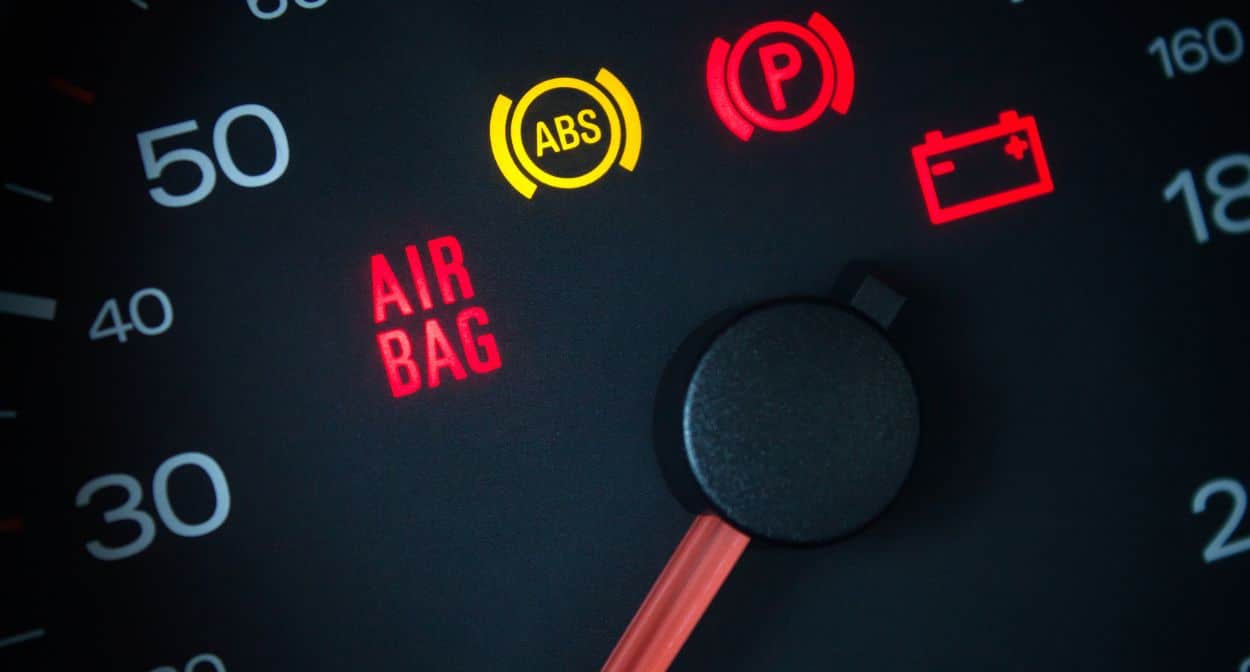Understanding the warning lights on your German car’s dashboard is crucial for maintaining its performance and ensuring your safety on the road.
German cars, known for their precision engineering, come with a range of unique symbols and terminology specific to brands like Audi, BMW, Mercedes-Benz, and Porsche.
Ignoring these warning lights can lead to serious mechanical issues, compromising the vehicle’s functionality and potentially leading to costly repairs.
Common Warning Lights

Engine and Transmission:
Check Engine Light
This light could indicate issues ranging from a loose gas cap to a more serious engine malfunction. It’s essential to diagnose the problem early to prevent further damage.
Transmission Temperature
Signifies that the transmission fluid is hotter than normal, which could lead to transmission damage. It’s advised to let the car cool down and check the fluid level.
Brakes and Safety Systems:
Brake System Warning Light
Indicates a problem with the braking system, such as low brake fluid or worn-out brake pads. This light demands immediate attention for your safety.
ABS Warning Light
When this light comes on, it points to an issue with the Anti-lock Braking System, crucial for preventing the wheels from locking up during an emergency stop.
Electrical and Stability Controls

Battery/Charging System Light
A warning that there might be an issue with the car’s electrical charging system, requiring a check of the battery and alternator.
Electronic Stability Control (ESC) Light
Indicates a problem with the vehicle’s stability control system, affecting traction and handling.
Tire and Fluid Monitoring
Tire Pressure Monitoring System (TPMS) Light
Alerts you to low tire pressure, which can affect fuel efficiency, tire wear, and handling.
Engine Coolant Temperature Warning Light
Indicates that the engine’s coolant temperature is too high, risking overheating. It’s critical to stop the vehicle and let it cool down.

Manufacturer-Specific Lights
Each German brand may have its unique warning lights, such as Mercedes-Benz’s Attention Assist or BMW’s Dynamic Stability Control. Familiarizing yourself with these brand-specific symbols can aid in better understanding your vehicle’s needs.
Emphasize Safety
For any critical warning light, such as those indicating issues with the brakes, engine, or airbag systems, it’s paramount to pull over safely and address the issue immediately. Ignoring these lights can compromise your vehicle’s safety and lead to more significant problems down the line.
Additional Tips
Consult Your Car’s Manual: Your vehicle’s manual is an invaluable resource for understanding the specific warning lights and their meanings.
OBD-II Scanners
These devices can offer more detailed diagnostics about your car’s condition. However, interpreting these codes can be complex, and it’s often best to consult with a professional mechanic for a thorough assessment.
In Summary
Regular maintenance is key to preventing the occurrence of warning lights. However, should they illuminate, it’s imperative to understand their significance and seek professional help when needed. Ignoring these warnings can jeopardize not only your safety but also the longevity of your beloved German car.


